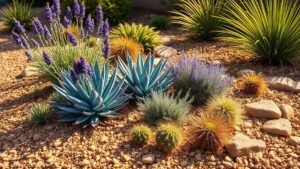The no-dig gardening method is a low-maintenance, soil-friendly approach to growing food. By layering organic materials on top of the ground instead of turning or tilling the soil, you protect soil life, suppress weeds, and build a thriving, productive garden.
In this article, you’ll learn how to start your own no-dig garden at home, step by step.
1. What Is a No-Dig Garden?
A no-dig garden is built using layers of compostable materials—like cardboard, compost, and mulch—placed directly on top of the soil or grass. Instead of disturbing the soil, you create a nutrient-rich growing surface that supports plants naturally.
Benefits:
- Retains soil structure and microorganisms
- Prevents weed growth
- Holds moisture more efficiently
- Reduces labor and long-term maintenance
- Improves soil over time
2. Choose the Right Location
Pick a space with full sun (6+ hours daily), good airflow, and easy access to water.
Ideal Areas:
- Backyard lawns
- Unused flower beds
- Patios with raised borders
- Urban yards with compacted soil
The no-dig method can be adapted to containers or raised beds as well.
3. Gather Your Materials
You’ll need the following to get started:
Base Layer:
- Cardboard (remove tape and labels) or several layers of newspaper
- Suppresses weeds and grass
- Breaks down into organic matter
- Suppresses weeds and grass
Organic Matter Layers:
- Compost (store-bought or homemade)
- Aged manure (optional)
- Straw, leaves, or grass clippings
- Topsoil or more compost for planting layer
The higher the quality of materials, the better your results.
4. Build the Layers
Start layering your materials directly on top of the soil—no digging required.
Step-by-Step:
- Flatten cardboard over the entire area (overlap edges to prevent weed gaps)
- Water the cardboard thoroughly to soften it
- Add a 4–6 inch layer of compost or aged manure
- Cover with straw, mulch, or leaves to protect and retain moisture
- Top with another 1–2 inches of compost or soil for planting
Aim for at least 8–10 inches of total depth.
5. Start Planting
You can plant immediately in a no-dig garden—no waiting required.
Planting Tips:
- Make small holes in the top layer and insert seedlings
- For seeds, rake the surface slightly and sow as directed
- Use starter plants for quicker results in deeper layers
Water thoroughly after planting to settle the materials.
6. Maintain the Layers Seasonally
No-dig doesn’t mean no care—but maintenance is easy.
Seasonal Tasks:
- Add a new layer of compost and mulch each season
- Pull weeds that sneak through (they’ll be easy to remove)
- Top up mulch to keep soil covered
- Rotate crops to maintain nutrient balance
Avoid stepping on the beds to keep the soil undisturbed.
7. Compost in Place (Optional)
Turn your garden bed into a living compost system.
Methods:
- Bury kitchen scraps under mulch
- Add green and brown material directly to the surface
- Cover with straw or compost to reduce smell and encourage breakdown
Worms and microbes will do the rest.
8. Troubleshooting Common Issues
Slow Plant Growth?
- Add more compost next time
- Check for drainage issues
Too Many Weeds?
- Add more mulch
- Ensure cardboard is thick and overlaps
Dry Soil?
- Mulch more heavily
- Water deeply, not frequently
No-dig gardens evolve and improve over time.
9. Adapt the Method to Any Space
This method isn’t limited to in-ground gardens.
Try No-Dig In:
- Raised beds
- Grow bags or large containers
- Balconies and patios with proper drainage trays
It’s also ideal for seniors, beginners, or those with mobility concerns.
Conclusion: Let the Soil Work for You
No-dig gardening honors nature’s systems. By building up instead of digging down, you support a healthier, more self-sustaining garden with less work and better yields.
Start simple. Layer well. Water and plant—and let the garden do the rest.






